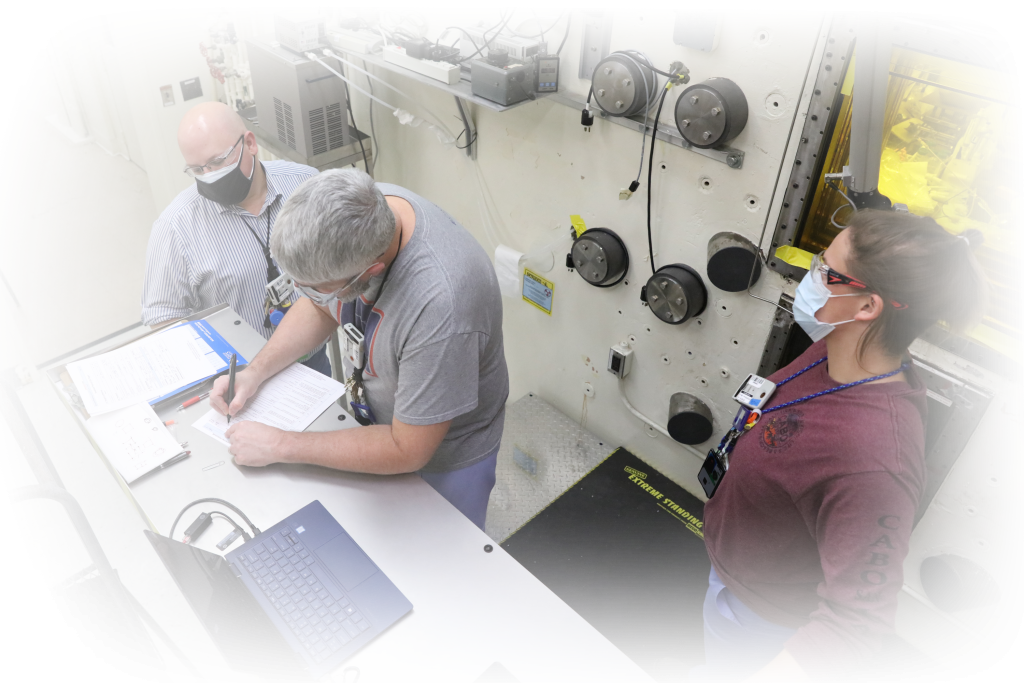
Oak Ridge National Laboratory receives funding from the U.S. Department of Energy Isotope R&D and Production Program (DOE Isotope Program), managed by the Office of Science, as part of a suite of national laboratories and universities focused on isotope R&D and production. The mission of the DOE Isotope Program is to produce and distribute stable and radioactive isotopes for research and applications that are in short supply and critical to the prosperity and security of the Nation. The DOE Isotope Program supports isotope production, R&D on isotope production techniques, workforce development, and reduction of U.S. dependency on foreign supply chains. Those interested in purchasing stable or radioactive isotopes from the DOE Isotope Program should contact the National Isotope Development Center.

Production Activities
ORNL produces more than 70% of isotopes for the DOE Isotope Program. In addition to actinium-225 and actinium-227, used for developing cancer treatments, medical isotopes in routine production at ORNL include thorium-227, thorium-228, radium-223, tungsten-188 and radium-225/lead-212 generators. Other isotopes in routine production include nickel-63, used in security and nuclear batteries, and selenium-75, used on off-shore oil rigs and at power plants to reduce the risk of radiographic exposure during outages.
Facilities
ORNL’s world-leading facilities offer a diverse set of tools for scientific research and production of isotopes. These facilities are staffed and maintained around the clock by highly trained workers. They include:
- High Flux Isotope Reactor: HFIR is the most powerful reactor-based source of neutrons in the United States and is one of the nation’s top facilities for production of medical- and industry-grade isotopes. It runs seven 24-day cycles of neutron production and is used by more than 500 researchers a year. It’s used to produce actinium-227, nickel-63 and plutonium-238, and is the Western Hemisphere’s only supplier of californium-252, used for industrial measurements and for starting up reactors.
- Radiochemical Engineering Development Center: The largest hot cell facility at ORNL, REDC has 15 hot cells where scientists can safely handle radioactive materials for processing, testing, recovery, and purification. In its unique laboratory spaces, experts work with some of the most exotic and rare materials on Earth using specialized equipment and systems to produce unique radioisotopes. This includes berkelium-249, which enabled the discovery of tennessine, element 117, and could help further expand the periodic table.
- Irradiated Material Examination and Testing Facility: IMET has six heavily shielded hot cells for testing the physical and mechanical properties of materials and examining materials that have undergone radiation. Sixty shielded storage walls provide space for irradiated specimens and hot equipment. IMET also has a specimen prep lab with a hood and glove boxes, where samples are prepared, and a tank vault room for storing and draining liquids.
- Irradiated Fuels Examination Laboratory: This building allows for the safe handling of increasing levels of radiation when examining the chemical, physical, and metallurgical properties of nuclear reactor fuel elements and reactor parts. In IFEL, capsules can be disassembled, spent nuclear fuel examined and repackaged, novel new fuels safely tested, and fuel particles sorted and analyzed, among other work.
- Radioisotope Development Laboratory: This facility houses four high-level hot cells specifically for beta-gamma radiation and one hot cell specifically for alpha radiation, along with seven laboratories for handing low-level materials, and a decontamination room.
- Radiochemistry Laboratory: This four-floor facility has laboratories, shop areas, cell ventilation ducts, and storage areas with chemical and radioactive labs throughout. The first floor has four hot cells surrounded by support labs and operating areas; directly above, on the second floor, is the high bay area with chemical and radiochemical labs. Controlled storage is available in the attic, which contains exhaust stacks for several ventilation systems.
R&D Activities
ORNL’s Radioisotope Science and Technology Division is a global leader in actinide science, research and development of the 15 metallic chemical elements with atomic numbers from 89 to 103, actinium through lawrencium. Scientists here are continually improving radiochemical processing and packaging methods as well as discovering and testing new uses for radioisotopes. These include applications in medicine, research, industry and national security, as well as innovations in designing and fabricating targets, assessing safety, and purifying products to meet sponsors’ and customers’ needs.

